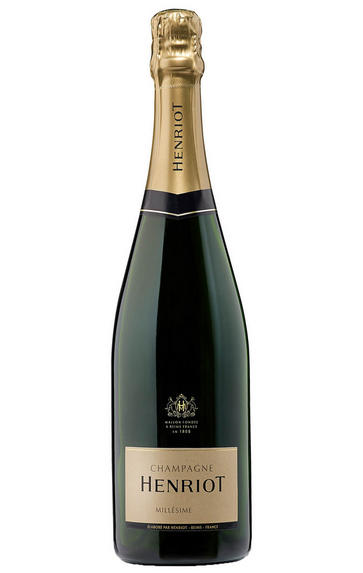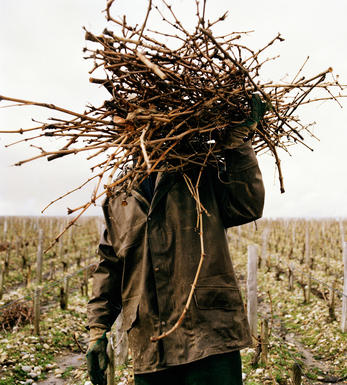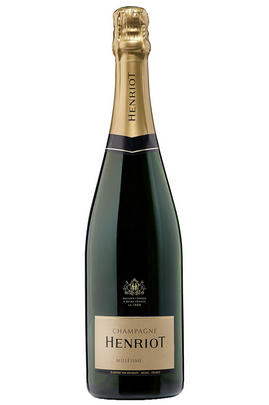
Critics reviews
William Kelley, The Wine Advocate (April 2019)
About this WINE

Champagne Henriot
Founded in 1808, the House of Henriot has a long and storied history of crafting exceptional Champagne. As a family-owned Champagne house, it has passed down the art of winemaking from generation to generation over the years.
Champagne Henriot is well-known for its commitment to quality, focusing on producing limited quantities of high-end, premium Champagne. They have access to some of the finest vineyards in the region, allowing them to source the best grapes to create their blends.
The house takes a traditional and meticulous approach to winemaking, utilising Chardonnay and Pinot Noir grapes to craft their Champagnes. This careful selection of grapes and their commitment to traditional techniques result in elegant and refined wines with a perfect balance of fruitiness, freshness, and complexity.
The range includes both vintage and non-vintage cuvées, with each bottle expressing the unique character of the Champagne region. Their wines have earned critical acclaim and are highly sought after by enthusiasts and collectors worldwide, making Champagne Henriot a symbol of luxury and excellence in the industry.

Rosé Champagne
Rosé wines are produced by leaving the juice of red grapes to macerate on their skins for a brief time to extract pigments (natural colourings). However, Rosé Champagne is notable in that it is produced by the addition of a small percentage of red wine – usually Pinot Noir from the village of Bouzy – during blending.
Recommended Producers : Billecart Salmon (Elizabeth Salmon Rose), Ruinart

Chardonnay
Chardonnay is often seen as the king of white wine grapes and one of the most widely planted in the world It is suited to a wide variety of soils, though it excels in soils with a high limestone content as found in Champagne, Chablis, and the Côte D`Or.
Burgundy is Chardonnay's spiritual home and the best White Burgundies are dry, rich, honeyed wines with marvellous poise, elegance and balance. They are unquestionably the finest dry white wines in the world. Chardonnay plays a crucial role in the Champagne blend, providing structure and finesse, and is the sole grape in Blanc de Blancs.
It is quantitatively important in California and Australia, is widely planted in Chile and South Africa, and is the second most widely planted grape in New Zealand. In warm climates Chardonnay has a tendency to develop very high sugar levels during the final stages of ripening and this can occur at the expense of acidity. Late picking is a common problem and can result in blowsy and flabby wines that lack structure and definition.
Recently in the New World, we have seen a move towards more elegant, better- balanced and less oak-driven Chardonnays, and this is to be welcomed.



Buying options
Add to wishlist
Description
Henriot's 2008 Brut Millésimé spent eight years sur lattes before disgorgement with six grams per liter dosage and is a blend of equal parts Chardonnay and Pinot Noir. The wine displays a gently reductive nose with notes of citrus and stone fruit mingling with suggestions of freshly baked bread, oyster shell and smoke. On the palate, it's medium to full-bodied, with a voluminous but notably fine mousse, bright acids and an elegantly chalky finish that's delicate but penetrating. This is a comparatively supple, open-knit example of the taut 2008 vintage, but I suspect it will gain appreciably with bottle age.2018-2035
William Kelley, The Wine Advocate (April 2019)
wine at a glance
Delivery and quality guarantee